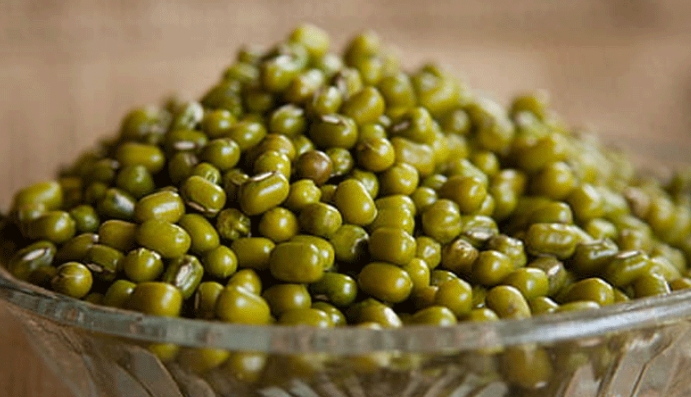
Using the Tiny Green Bean

Drinking a bowl of cold sweet mung bean soup every day is a Chinese habit in summer - it's a delicious dessert and a "cold" (yin energy) treat to cool down your system in the heat.
According to traditional Chinese medicine, the tiny green mung beans (lu dou) eaten as soup or congee can expel toxins.
Beans are among the super-nutritious foods, and mung beans are among the best.
Rich in protein, fiber and good carbohydrates, calcium, phosphorus, iron, and vitamins.
According to TCM, since mung beans are "cold" (yin), they help dispel internal heat, clear away toxins, promote urination and relieve hot weather ailments and rashes.
Li Shizhen, a pharmacologist in the Ming Dynasty (1368-1644), identified medical functions of mung beans and recorded them in "Ben Cao Gang Mu" ("Compendium of Materia Medica"), a classic of TCM pharmacopoeia.
Li said the little cooked bean could help relieve edema, clear internal heat and toxins, relieve heat stroke and thirst, calm the nerves, reinforce yuan qi (original energy), harmonize the organs and nourish the skin.
Mung beans can be ground into powder for internal or external use, treating skin ulcers and burns by expelling toxins. Mung bean starch is also made into glass noodles.
Mung bean skin helps dispel pathogenic heat and improve eyesight. Mung bean sprouts are said to help relieve alcoholic intoxication.
Mung bean soup and congee are the conventional ways to eat the bean, but how you cook it is important.
As the bean skin helps expel pathogenic heat, don't overcook.
Wash the beans, bring them to a quick boil, reduce heat and simmer for 10 minutes. Done. The soup is clear and green. You can drink the soup and leave the beans.
If you want more effective detoxification, you should eat the bean itself.
Soak washed beans in hot water for 20 minutes. Make soup, cooking until the beans are soft and liquid is cloudy. Then eat the beans and the soup.
This helps dispel toxins by acting as a diuretic. Eating mung beans regularly can help relieve high blood pressure, high cholesterol and hardening of the arteries, TCM practitioners say.
Mung beans are good for most people - most people have "neutral" constitutions.
However, if you are "cold" (too much yin energy), suffer from cold extremities or diarrhea, don't overdo the mung beans. They can aggravate the cold and cause other ailments. Light congee is advised.
People with digestive problems should avoid mung beans because they are very high in protein and may be difficult to digest. As they expel toxins, mung beans may decrease the effectiveness of some medicine.
Don't eat mung beans less than half an hour before or after taking TCM or Western medicine.
Mung beans and honeysuckle soup
Ingredients:
Mung beans (100g), honeysuckle (30g)
Preparation:
1. Soak washed beans in hot water for 20 minutes.
2. Make soup, cooking until beans are soft.
3. Add honeysuckle, cook for a few minutes at low heat.
Function:
Dispels toxins, prevents, relieves heat rash.
Mung bean and jellyfish soup
Ingredients:
Mung beans (50g), jellyfish (50g)
Preparation:
1. Soak washed beans in hot water for 20 minutes, jellyfish in cold water for 20 minutes.
2. Make soup, cooking until beans are soft.
Function:
Dispels toxins, relieves high blood pressure and coughing.